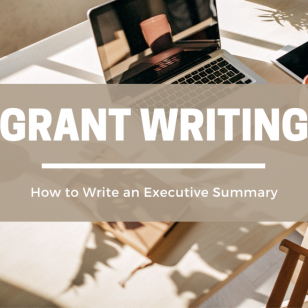By Kelsey Boudin
President and Founder, Southern Tier Communications Strategies, LLC
Nonprofit grant writing success takes diligence and persistence.
So first figure out the mission(s), project(s) or initiative(s) for which you need funding. It requires attention to detail and a set of “SMART” goals (specific, measurable, achievable, relevant and timely). Your grant strategy is destined to fail if it’s cobbled together without any real design, focus or idea where the funding may flow from.
With that direction, you must then be “SMART” about your potential funding sources. Grant resources are highly competitive. Even strong proposals routinely get shot down in lieu of another over one minor point or oversight. Why waste time and human resources (and money) soliciting proposals to funders that don’t match your nonprofit’s mission, vision and scope?
So what do you do? You become a private investigator, a super sleuth, a digger for info that leads to pulling the trigger on a funding pursuit, filing an opportunity away, or tossing it in the trash. Here are some tips for finding grant funders that support your mission.
Follow the Money Trail to Grant Writing Success
Subscription Services
These are a great place to start. Subscriptions to places like GrantStation and GuideStar provide near-unfettered access to information about nonprofits and grantmakers recognized by the IRS. Profiles like these often allow you to search for grantmakers based on certain criteria (area of interest, geographic focus, target population, type of support, etc.). You may also build strategies and save potential grantors for future review.
You may also register with Grants.gov or your state’s official grants portal (mine in New York is the NYS Grants Gateway). Or subscribe to a government agency aligning with your nonprofit’s mission (perhaps the Department of Health and Human Services or Department of Education).
With most any subscription or registration you’ll receive regular emails and other updates on current and upcoming funding processes.
IRS 990s
My grant writing clients laugh when I tell them how much I enjoy looking through IRS 990s. No one likes looking through IRS forms. It takes a special kind of crazy to enjoy a deep dive into tax documents.
As a grant writer and researcher, you must be that special kind of crazy. An IRS 990 is a financial form tax-exempt organizations — many of them grantmakers — file with the federal government. They’re available for public inspection via the IRS Tax Exempt Organization Search.
At first glance, it’s a boring document with numbers that’ll put you to sleep. A closer look paints a detailed picture of the organization’s financial health and funding priorities. It lists total numbers of grants and other charitable contributions given in a fiscal year — and to whom they were given, how much and why. That’s transparency you can’t buy.
The 990 also lists Board members and C-level executives that may not be listed anywhere else. You may want to speak with them later.
Annual Reports
Most grantmakers will issue annual reports. They give the pulse of the organization and are sometimes well-designed, with pictures, testimonials and compelling stories illustrating their missions. They may or may not provide a highly detailed fiscal picture, including each grant given, with pretty quarterly charts and graphs. More likely, annual reports will give a capsule breakdown of the organization’s biggest and most impactful grants and acts of charity.
If there’s a brief writeup about a grant-funded project, you’ll learn more than numbers alone could ever tell you: the human impact. You can literally see the types of missions the grantmaker supports most often. If your mission or project doesn’t match, or at least fit the spirit, it would likely be pointless to apply.
Media
Organizations love publicity. It’s not vanity. It’s success. Use that to your advantage.
Look at a prospective grant funder’s social media. Check their website. Search for media reports. They likely have photos and videos of that ribbon cutting to a new facility opened by their charity. A local newspaper or television station may cover a grant-funded initiative to provide winter clothes to impoverished school children. Many grantmakers include highly specific contract language to publicize grant activities, so you should have little difficulty finding info.
Have fun poking around. Funders usually leave a pretty detailed digital breadcrumb trail.
Community Events
The regional Chamber of Commerce dinner or a nonprofit open house can be a perfect networking opportunity. Introduce yourself to a CEO. Have a glass of wine with a grant officer. In other words, make yourself, your organization and your mission visible.
Many grantmakers receive hundreds, if not thousands, of unsolicited grant submissions annually. The majority end up in the trash, a massive waste of time even to the person who first reviewed the email or opened the envelope. Grant officials do, however, appreciate the opportunity to discuss grant initiatives. As you invite them to partner in your nonprofit’s success, they enjoy helping to craft a worthwhile mission to make it worthy of their support.
Select the Right Grantmakers to Enhance Chances for Funding
Whether you’re a professional grant writer or someone on a small staff tasked with writing proposals out of necessity, you must do your homework on potential grant funders. Wasted efforts are wasted chances at funding. If you need a matchmaker, feel free to reach out to a grant writer with experience.







